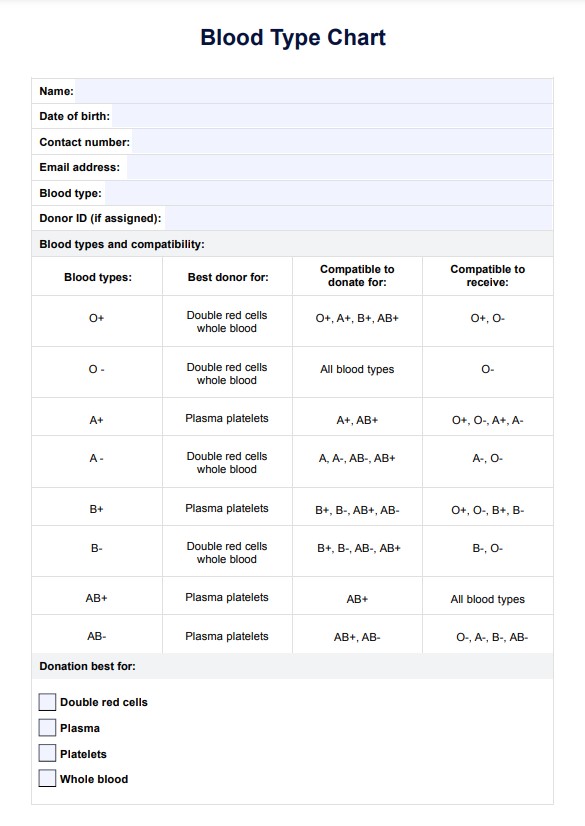The three rarest blood types are AB negative, B negative, and A negative. These blood types are relatively uncommon due to the fact that they have specific antigen combinations that make them less likely to be found in a large number of people.

Blood Type
Discover more about blood types, compatibility and donor information with our comprehensive guide. Access the PDF template now.
Blood Type Template
Commonly asked questions
Yes, AB+ and O+ are compatible blood types. Individuals with type AB+ have both A and B antigens on their red blood cells, making them able to receive blood from all other types (A, B, AB, and O).
No, O+ blood is not considered rare. In fact, it is the most common blood type, with approximately 38% of the world's population having this blood type. However, it can still be difficult to find a compatible donor for patients with O+ blood in certain situations, as they can only receive blood from other individuals with O+ or O- blood types.
EHR and practice management software
Get started for free
*No credit card required
Free
$0/usd
Unlimited clients
Telehealth
1GB of storage
Client portal text
Automated billing and online payments











